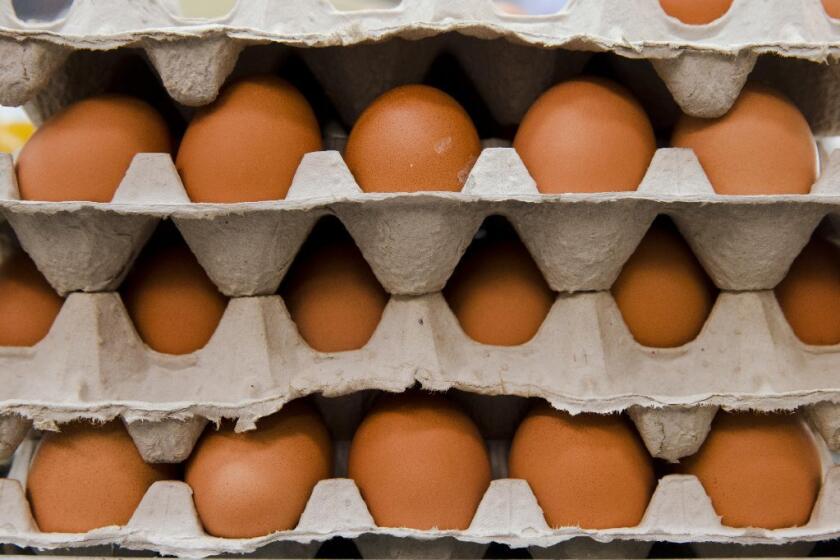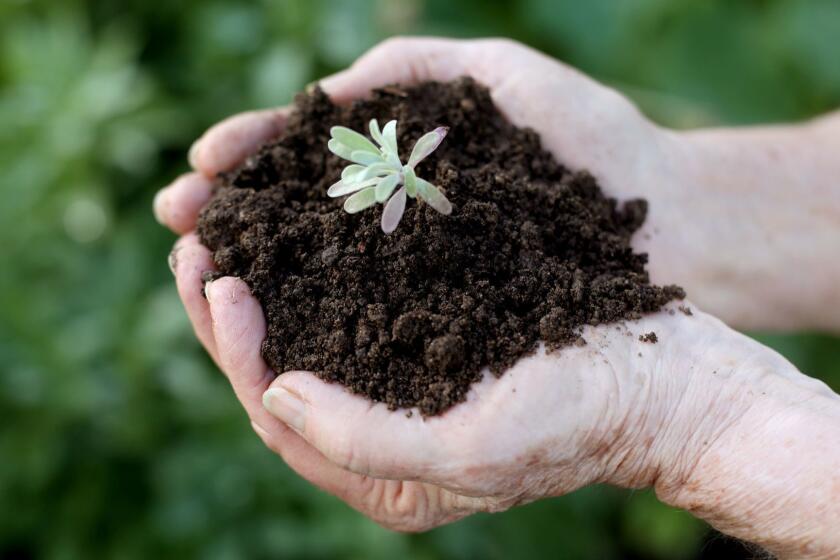Supercharge your plants with leftover eggshells by brewing ‘shell tea’

)
We’ve all been eating a lot of eggs lately, if sales data are to be believed. You love what’s inside of them. But did you know your plants love what’s outside?
So don’t toss those shells. Whether you’re growing a victory garden or tending an indoor houseplant menagerie, there are ways to use your eggshells to give your plants a nutritional boost. Eggshells are made almost entirely of calcium carbonate, which our bodies need for healthy bones and muscles. Our plants need it too. And you can deliver it to them through compost, soil or by making “eggshell tea.”
Clean, dry eggshells can go directly into your compost, says Yvonne Savio, who worked as a master gardener coordinator for L.A. County and runs the website GardeningInLA.net. You also can put crumbled shells in the soil before you place plants or seeds. The minerals — mostly calcium carbonate, though also small amounts of potassium and phosphorus — will slowly break down to the point where they can be absorbed by the plant’s roots. But it takes a long time for the shells to decompose, so think of doing this as fertilizing next year’s plants.
As shoppers rushed to grocery stores to stock up on food staples, they cleaned out egg aisles across the country. That has boosted egg prices.
Plants like tomatoes, peppers and eggplants in particular will benefit from shell fertilizer, Savio said. The extra calcium will help prevent blossom-end rot. Broccoli, cauliflower, Swiss chard, spinach and amaranth are also calcium-packed and could use extra from eggshells.
Shards of eggshell also can be used to keep certain pests out. If your plants suffer from snails or slugs, spread the crumbled shells on top of the soil around the base of the plants, making the barrier about two inches wide all around. Slimy creatures won’t be able to get past the pointy bits.
If you only have indoor garden space, eggshells can still give your plant babies a boost in the form of “eggshell tea.”
It’s warming up — at last!
Leigh Adams, an interpretive horticulturist and educator at the Los Angeles Arboretum, said you don’t have to be too specific with this recipe. Rinse out your eggshells so there’s no sticky whites left, and let them dry out. (She keeps them in the corner of her microwave while she heats up other things. I leave mine in a container in the back of the fridge.) Crumble your eggshells by hand, put them in a temperature-safe container, and then pour boiling water over them. Let the mixture “steep,” just like tea, for as long as it takes for the water to cool to room temperature.
If you don’t want little shards of eggshell in your indoor plants, you can strain the shells out and only use the water if you want, or leave them in for the long-term fertilizing boost. Pour the liquid over your plants the same way you’d use regular water on them.
Decorative plants (i.e., your collection of succulents) don’t need as much calcium as food-growing plants, but all plants will benefit from the minerals in eggshell tea.
“It’s kind of like an all-purpose fertilizer, and the plant will pull up what it can use, what it’s in need of,” Savio said.
In this time of potential shortages and limited grocery store runs, we’re all trying to make the most of what we have. Make your eggshells work for you.
More to Read
Sign up for The Wild
We’ll help you find the best places to hike, bike and run, as well as the perfect silent spots for meditation and yoga.
You may occasionally receive promotional content from the Los Angeles Times.











